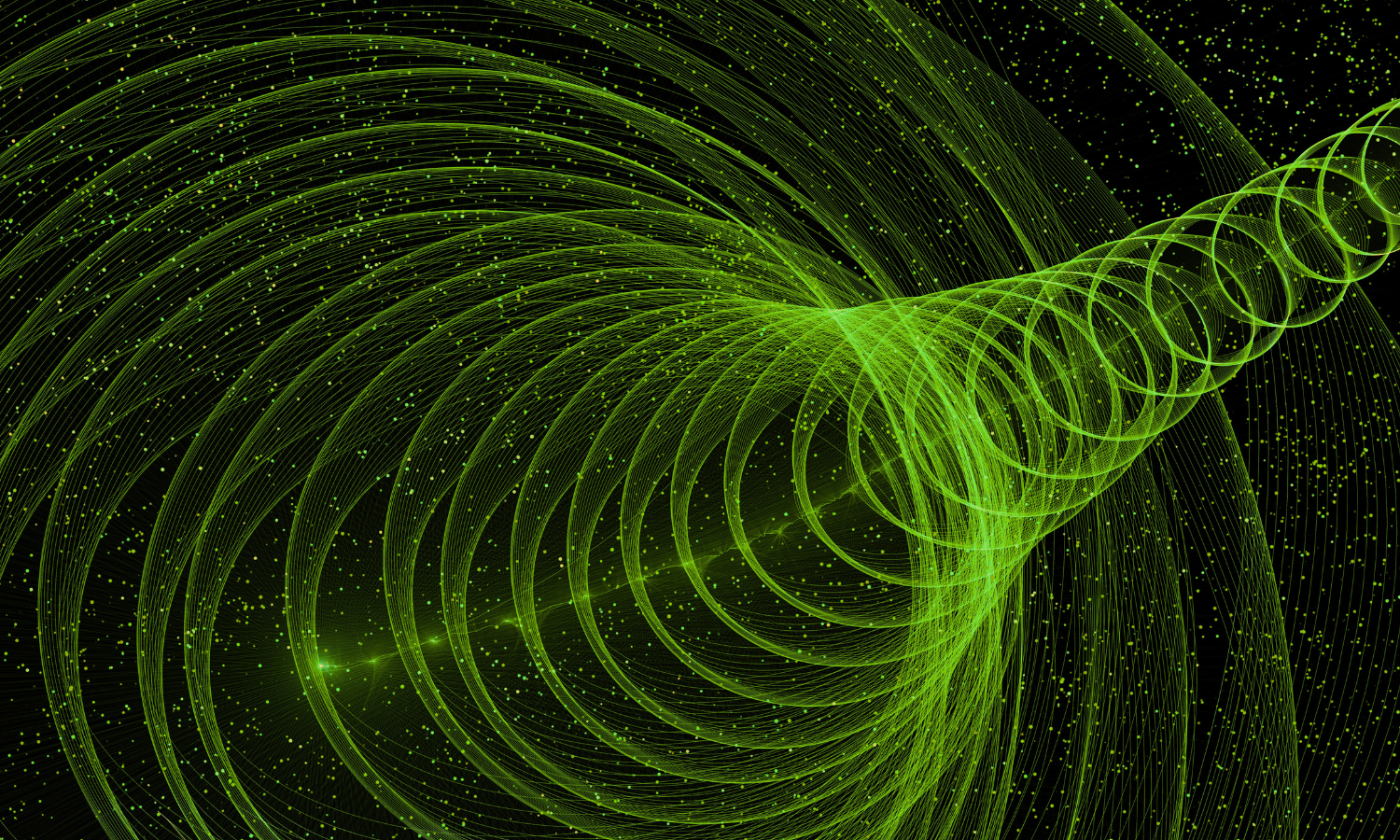A Neuro-Symbolic Framework for Financial Market Singularity Analysis
Author
Richard Goodman
Date Published

Abstract
Financial markets exhibit profound complexity, where abrupt, non-linear events defy conventional analysis. To navigate this landscape, we introduce a novel class of neuro-symbolic models that merges deep learning architectures with foundational principles of complex analysis. Our framework is uniquely engineered to identify and forecast market singularities and structural breaks, providing critical foresight for strategic decision-making. It operates on a core principle of symbiotic collaboration, delivering both high-fidelity predictive power and human-interpretable symbolic outputs that augment analyst cognition. This versatile architecture features parallel processing streams, each excelling at different problem domains, and is designed for future integration of high-dimensional data, including network sentiment. The system yields a rich, multi-faceted output—from actionable signals to dynamic risk assessments and distilled mathematical models—pioneering a new paradigm in computational finance.
View Related Publications
GitHub Repo : https://github.com/Apoth3osis-ai/neuro_symbolic_forex_singularity
Research Gate: https://www.researchgate.net/publication/392698662_A_Neuro-Symbolic_Framework_for_Financial_Market_Singularity_Analysis
1. Introduction
Traditional quantitative models in finance often rely on assumptions of normality, stationarity, and linear relationships that are frequently violated in real-world markets. While these models can be effective during periods of stability, they consistently fail to anticipate or interpret the most critical market phenomena: the sudden, high-impact events, or singularities, that drive systemic risk and opportunity. These structural breaks, from flash crashes to volatility explosions, are not mere outliers but are fundamental features of a complex adaptive system.
The central challenge, therefore, is not simply to improve predictive accuracy on average, but to develop a framework capable of understanding the anatomy of these critical events. The Apoth3osis mission is to empower human decision-making by creating AI that serves as a cognitive partner. In this spirit, we propose a framework that moves beyond black-box prediction to generate deep, interpretable insights into market dynamics.
Our approach is grounded in the synthesis of two powerful fields: the rigorous, descriptive power of complex analysis and the adaptive, pattern-recognition capabilities of deep neural networks. By representing market behavior in the complex plane, we can leverage mathematical tools specifically designed to analyze discontinuities and singular points. The output of this analysis is a rich, symbolic feature set that provides a human-readable "fingerprint" of a market event, which can then be used to train sophisticated predictive models.
This paper outlines the theoretical foundations of our Laurent Lag Window (LLW) methodology, details its implementation in a high-level system architecture, and explores its profound implications for risk management, alpha generation, and the future of human-AI collaboration in finance.
2. Theoretical Foundations: The Laurent Lag Window (LLW)
To deconstruct market events, we developed the Laurent Lag Window (LLW), a methodology for analyzing the state of a financial time series in the moments immediately preceding a significant price movement.
2.1. Defining Market Singularities
In the context of this framework, a market singularity is not a mathematical point of infinite value but a practical one: a discrete, rapid price movement that constitutes a structural break from recent behavior. We pragmatically identify these events by defining a threshold based on market-specific metrics, such as a price change of a certain number of pips or standard deviations occurring within a minimal time interval. Once an event at time t is flagged as a singularity, we establish a "lag window" containing the data from a preceding period, for example, t−N,t−1, which becomes the subject of our analysis.
2.2. Laurent Series for Local Behavior Analysis
Classical polynomial approximations, like the Taylor series, are effective for modeling smooth, continuous functions. However, they inherently fail to represent the sharp, discontinuous behavior that defines a market singularity. For this, we turn to the Laurent series, a cornerstone of complex analysis designed specifically to describe function behavior around such points.
Given a function f(z) in the complex plane, its Laurent series expansion around a center point c is:
f(z)=n=−∞∑∞an(z−c)n
This representation provides a powerful decomposition of local market dynamics:
The Regular Part (n≥0): This consists of the terms with non-negative powers. It functions like a standard Taylor series, effectively modeling the predictable, trending behavior of the market leading up to the singularity.
The Principal Part (n<0): This is the key to our analysis. The terms with negative powers capture the signature of the singularity itself—the unstable, divergent dynamics that cannot be modeled by regular polynomials. The coefficients (an) of this part, particularly the residue (a−1), provide a quantitative "fingerprint" of the event's underlying nature, distinguishing a liquidity-driven shock from a momentum-fueled breakout.
2.3. Fourier Transform for Global State Analysis
While the Laurent series provides an exceptional tool for analyzing the local structure of the event, it is complemented by an analysis of the market state preceding it. For this, we employ the Fast Fourier Transform (FFT) on the data within the lag window. The FFT deconstructs the price action into its constituent frequencies, offering a view into the market's "rhythm." The resulting frequency spectrum can reveal:
Low-Frequency Dominance: Indicative of a strong, stable trend.
High-Frequency Noise: Suggestive of erratic, nervous, or uncertain market participation.
Specific Harmonic Resonances: Which may correspond to the activity of algorithmic trading systems or other periodic market behaviors.
2.4. A Dual-Perspective Framework
By combining these two transforms, the LLW methodology creates a uniquely powerful, dual-perspective feature set for each market event. The Laurent series describes the structural anatomy of the singularity itself, while the Fourier transform describes the global market context in which it occurs. This neuro-symbolic feature vector provides a far richer basis for machine learning models than price data alone.
3. System Architecture and Implementation
The theoretical principles of the LLW are instantiated in a robust, modular software architecture designed for extensibility and performance.
3.1. Data Processing Pipeline
The system begins with a secure and user-driven data ingestion pipeline. Raw time-series data is loaded, validated, and pre-processed. A key step is the calculation of the mid-price and its continuous diff to scan for potential singularity events based on the user-defined pipthreshold.
3.2. The LLW Analysis Engine
A centralized ForexLLW class encapsulates the core analysis logic. Its primary workflow is as follows:
Detection: The engine scans the prepared time series for any price movements that exceed the defined singularity threshold.
Windowing: For each detected event, a lag window of a specified length (e.g., 30 minutes) is established.
Parallel Analysis: Within this window, the engine performs two complementary analyses:
Feature Vector Generation: The results—including Laurent coefficients, Fourier magnitudes, and other relevant metadata—are compiled into a structured feature set for each singularity.
3.3. Neuro-Symbolic Feature Output
The output of the LLW engine is more than a set of numerical features; it is a symbolic representation of market dynamics. Each Laurent coefficient has a direct mathematical meaning related to the stability or instability of the price action. These features are designed to be consumed by downstream neural network architectures, providing them with a profound contextual understanding of the market state that is impossible to achieve from raw price data alone.
4. Applications and Implications
The ability to deconstruct and classify market singularities has profound implications across quantitative finance.
4.1. Advanced Risk Management:
By identifying the unique "fingerprints" of different types of market shocks (e.g., liquidity-driven vs. momentum-driven), firms can move beyond generic risk models like VaR. This allows for the development of tailored hedging strategies and more accurate quantification of tail risk.
4.2. Alpha Generation:
Market singularities are, by definition, periods of maximum inefficiency and therefore maximum opportunity. A system that can identify the precursors to these events can form the basis of powerful trading strategies that capitalize on volatility, trend reversals, or breakouts.
4.3. Augmenting Human Cognition:
The framework is designed to empower human analysts, not replace them. The symbolic outputs and visualizations provide a new, intuitive language for interpreting market chaos. This fosters a symbiotic relationship where the machine handles the complex computation and the human provides high-level strategic oversight and interpretation.
4.4. Implications for Economic Modeling:
Analyzing the distribution and nature of market singularities can provide deeper insights into the health and stability of the market as a whole. This has broader implications for understanding systemic risk, market fragility, and the mechanisms of financial contagion.
5. Projected Future Work
The LLW framework presented here is a foundational component of a much broader research and development agenda at Apoth3osis. It is designed as a modular base for several future extensions:
5.1. Memory-Augmented Architectures:
We are actively researching the integration of external memory systems, inspired by architectures like the Differentiable Neural Computer. This will allow our models to understand how the "memory" of past market shocks and singularities influences future market structure and stability over long time horizons.
5.2. Multi-Resolution Analysis with Wavelets:
To capture time-localized frequency information, we are exploring the use of wavelet transforms as a more powerful alternative to the Fourier transform. This will enable the analysis of transient and non-stationary market rhythms.
5.3. Higher-Dimensional Geometric Analysis:
The most ambitious extension involves leveraging geometric algebras, such as Clifford Algebra, to generalize this analysis. This would allow for the modeling of complex, multi-asset systems and the analysis of systemic risk and contagion as unified geometric phenomena.
5.4. Integration of Unstructured Data:
In line with our mission, we plan to integrate features derived from unstructured data sources, such as network sentiment from social media, to create a truly holistic model of market dynamics that captures both mathematical and behavioral drivers.
6. Conclusion
We have presented a novel neuro-symbolic framework for the analysis of financial market singularities. By uniquely combining the Laurent series for local structural analysis and the Fourier transform for global state analysis, our Laurent Lag Window (LLW) methodology provides an unprecedented level of insight into the dynamics of critical market events. This approach moves beyond the limitations of traditional predictive models to offer a deeper, more fundamental understanding of market behavior. The resulting framework not only promises to enhance risk management and alpha generation but also pioneers a new, symbiotic paradigm for human-AI collaboration in navigating the complexities of modern financial markets. The work conducted at Apoth3osis continues to build on this foundation, aiming to create systems that possess not just an information advantage, but a true wisdom advantage.
7. References
1 Churchill, R. V., & Brown, J. W. (2009). Complex Variables and Applications. McGraw-Hill.
2 Oppenheim, A. V., & Schafer, R. W. (2010). Discrete-Time Signal Processing. Pearson.
3 Graves, A., et al. (2016). Hybrid computing using a neural network with dynamic external memory. Nature, 538(7626), 471–476.
4 Lounesto, P. (2001). Clifford Algebras and Spinors. Cambridge University Press.
Related Projects

Decomposing financial time-series into a multi-domain set of latent components and reconstructing the signal using evolutionary algorithms

A novel deep learning architecture designed for algorithmic trading that fundamentally reconsiders the temporal assumptions of market prediction.

A comparative study of combinatorial optimization and evolutionary algorithms as foundational methodologies for predictive modeling in forex markets.
